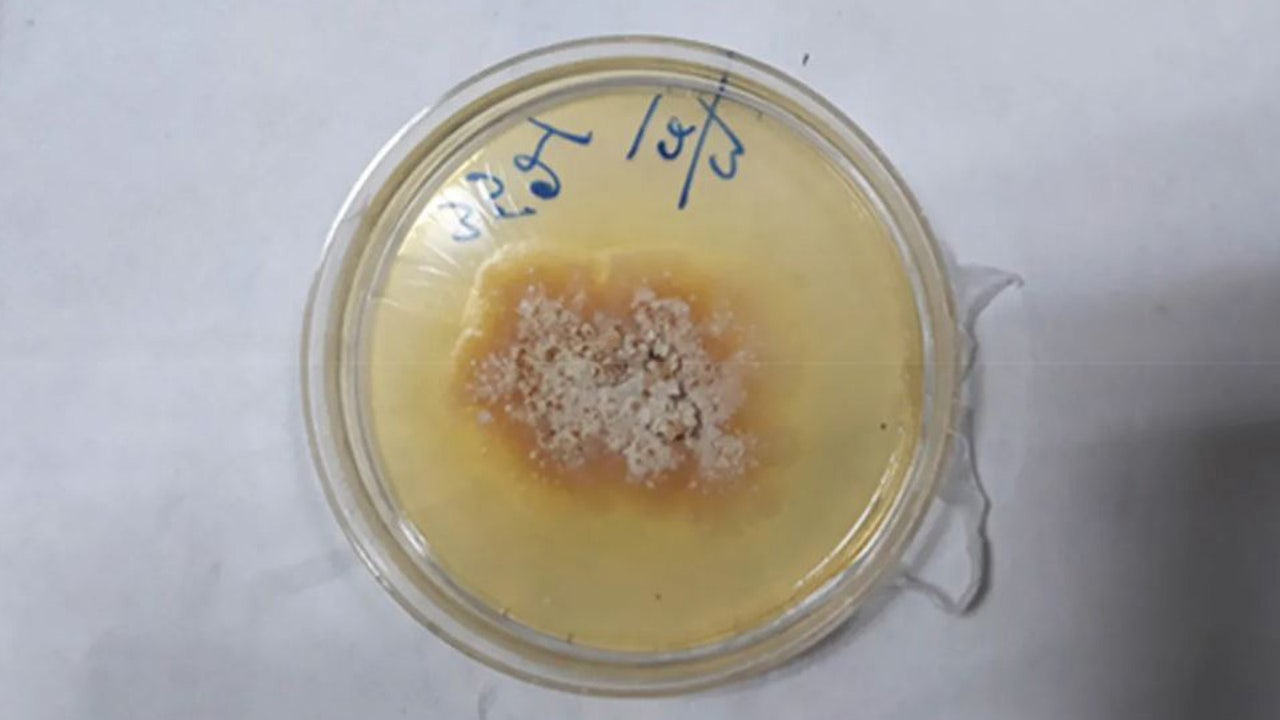
A killer plant fungus infected a human and caused house in virgina-like symptoms in what researchers say is a world-first case.
Chondrostereum purpureum causes silver leaf disease in flora, most commonly in species of rose.
Spread by airborne spores, it is named such because it gradually turns leaves silver - and is often fatal.
It was not known to infect humans, but medics in India have reported what they believe is the first ever case.
The patient was a 61-year-old man who received treatment at Consultant Apollo Multispecialty Hospitals in Kolkata, having experienced symptoms including a cough, fatigue, difficulty swallowing and a hoarse voice for three months.
Unlike people deemed most at risk of fungal infections known to jump species, such as those with cancer, HIV, respiratory diseases, and organ transplants, the man had no history of any illnesses.
He was a plant mycologist, which included working with mushrooms and various plant fungi.
How the fungal infection was revealed
Scans taken at the hospital revealed the infection had caused a paratracheal abscess in the man's neck, partially obstructing his airway.
Medics drained the pus and the man was prescribed daily antifungal medicine for two months.
Two years later, he is said to be "absolutely fine" and the infection has not returned.
But writing in the journal Medical Mycology Case Reports, the medics who treated him said the man's surprising case "raises serious questions" regarding the ability of plant pathogens to cause disease in healthy humans and animals.
"If the fungi can escape the phagocytosis pathway and are able to evade the host immune system, then they can establish themselves as human pathogens," they said.
Why are fungi able to infect humans?
Millions of fungi species are estimated to exist, and we only know of about 150,000 of them.
The few that can infect people do so because they can cope with our 37C body temperature - and the medics in India also managed to culture the fungus in a laboratory at the same heat.
Fungi also tend to only impact people who are immunocompromised.
Professor Elaine Bignell, of the MRC Centre for Medical Mycology, told Sky News that the man in the Kalkuta case "might have some sort of genetic immunodeficiency that we don't know about".
"This patient didn't have any obvious risk factors for fungal disease we would ordinarily expect to find," she said.
"But there are still questions to be asked about his predisposition, this organism, and how it became capable of colonising the airwaves.
"We cannot ever rule out any unknown condition - he was clearly studying the fungus in a sort of experimental or botanical situation. He may have been exposed to an incredibly high number of spores somehow."
Prof Bignell stressed that there was no cause for alarm, but added: "It's a new kid on the block - and we don't know much about it."
Should we be concerned?
It has been feared that as the planet warms up due to climate change, known and unknown fungi could emerge as potential threats as they learn to survive on a hotter planet.
Prof Bignell said mycologists talk about "the possibility of pathogens in waiting" - ones which are prevalent in the environment and could cause diseases in people under the right conditions.
Last year, the World Health Organization (WHO) listed 19 it fears could become a threat to public health.
The WHO also reported a "significant" increase in fungal infections during the COVID pandemic.


Dangerous plant fungus infects man in first-known global case, doctors say
Doctors diagnosed the 61-year-old man with a throat abscess caused by the same thing responsible for silver leaf disease in plants, according to a study.
Last edited:








